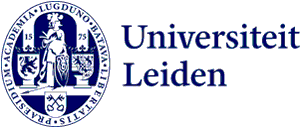
Jan Willem Erisman on the nitrogen crisis: 'The measurement model works, but the minister is setting reduction targets that are too high'
Opponents of drastic nitrogen measures argue that the nitrogen calculation model is not reliable enough. Nitrogen professor Jan Willem Erisman: 'It is now much more important to discuss the choices we make on the basis of the outcome. The differences are much bigger than the uncertainties in the model.’
On 10 June, the Dutch government presented far-reaching regional measures to reduce nitrogen emissions into the air. One question raised by opponents is whether there is sufficient knowledge to take such rigorous measures. And can it be done with models alone?
Measurements prove that the model is correct
The nitrogen crisis began in 2019 when the Council of State rejected the government's nitrogen policy. Ever since, there has been a discussion about models and measurement. The Mesdag Dairy Fund questioned the agricultural contribution to the nitrogen load on nature, but eventually arrived at comparable figures.

Nitrogen policy must be underpinned by models and measurements together. Measurements alone cannot map out all nitrogen emissions, given the enormous number of sources and their spatial variation. Measurements are essential to evaluate the models properly. That is what happened: measurements have sufficiently demonstrated that the model gives correct results.
The Hordijk Committee judged the current data to be reliable
The Hordijk Committee, commissioned by the then minister of agriculture Schouten, assessed the quality of the measurements and models used to support nitrogen policy. The conclusion was that the data, methods and models are of sufficient to good quality. Even though improvements are needed to further reduce uncertainties, the Committee considers the current instruments suitable for measuring and calculating the concentration and deposition of nitrogen compounds.
The law requires nitrogen to be reduced in nature
So the policy is solidly underpinned by the measurement models we now use. And the nature targets that the government wants to realise with its radical policy are set out in the law. It says that 74% of the area of Natura 2000 sites must fall under the Critical Deposition Value (KDW) for nitrogen.
How we achieve this nature gain is still to be determined
So we know how much nitrogen is emitted where, and also how much reduction is needed in nature reserves. What the model and the law do not prescribe is how to achieve the necessary reduction in those nature areas. There are various possibilities: do you instruct everyone to emit half as much nitrogen, as stated in the coalition agreement? Or do you take different measures for agriculture and other sectors?
The government opted for 39 Kilotons less agricultural emissions in 2030
The government opted for the latter: traffic, industry and energy production will be required to reduce nitrogen emissions by half by 2030, in line with European policy. Agriculture, particularly livestock farming, must reduce emissions by 39 kilotons, and in some areas this means a reduction of 70% or more. The provinces must determine with farmers how to do this. The detail of the map presented by the government on 10 June suggests that nitrogen reductions must be achieved per farm.
With a 25-kiloton reduction we will also meet the targets
In Naar een ontspannen Nederland we and our colleagues demonstrated that the required results for nature areas are also achievable with 25 instead of 39 kiloton reduction in agriculture. With a new method, based on RIVM models, we can determine where you can most effectively take measures to significantly improve the nitrogen condition in all nature areas.
Area-based approach offers more room for individual choices
We propose area-based average reductions, so that within an area you can take into account stoppers, leaders and stayers. You can then share the burden. On the island Schiermonnikoog, we have shown in recent years how successful that can be.
In summary: the discussion is now wrongly focused on the reliability of the models. The discussion should be about the choices we now have to make based on the application of the model. The difference in outcome, as much as 14 kilotons, is far greater than the uncertainty in the models. From now on, let's discuss how much and where we should reduce nitrogen emissions to protect nature.
Text: Jan Willem Erisman
Image: Pixabay
Jan Willem Erisman is Professor Environmental Sustainability at the Leiden Institute of Environmental Sciences (CML). He has been researching nitrogen for decades and is a much sought-after expert in politics and the media.
